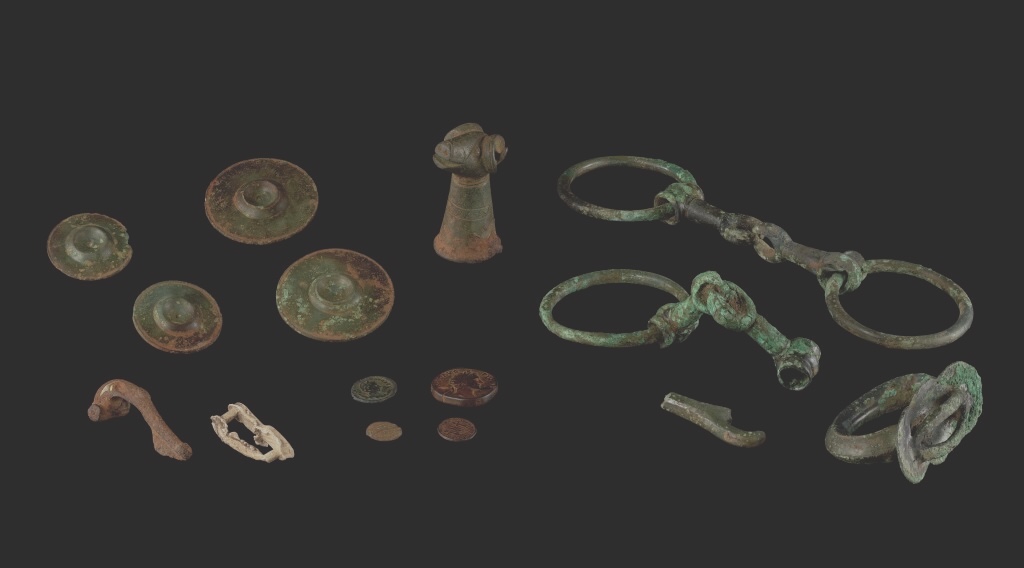Items used by Roman cavalry and other treasures unearthed by metal detectorist in Wales
A collection of artifacts found on an island in Wales could be part of a religious offering.

A collection of metal Iron Age and Roman-era artifacts unearthed by a metal detectorist on an island in Wales has been declared national treasure.
Ian Porter made the discovery in 2020 while exploring pastures and a spring on Anglesey, located off the western coast of Wales' mainland, according to a statement from Amgueddfa Cymru — Museum Wales.
"I was so excited when I found these items," Porter said in the statement. "To think that the last person who touched them lived almost two thousand years ago and it shows some of the history of the island."
Porter immediately notified authorities from the Portable Antiquities Scheme in Wales, which records archaeological findings made by the public, of the 16 artifacts, which included several Late Iron Age chariot fittings from the first century A.D. and Roman cavalry fittings from the same time period that included segments from three bridle-bits, a terret (rein guide), a ram's head fitting, and a set of four harness discs.
He also discovered a decorated brooch, four coins and a lead pot repair, all dating to the British Roman period (A.D. 43 to 410), as well as a large, 45-pound (20 kilograms) Roman copper ingot used in copper manufacturing that was likely smelted using metal from a nearby mine.
Related: 2,000-year-old gold treasure from Iron Age tribe unearthed by metal detectorists in Wales
"This culturally mixed artifact group … is an important new find for the island," Adam Gwilt, principal curator of prehistory at Museum Wales, said in the statement. "It was placed during or in the aftermath of the period of invasion of the island by the Roman army" in A.D. 60 or 61.
Get the world’s most fascinating discoveries delivered straight to your inbox.
Considering the items were located near a spring, whoever buried them possibly saw the location as a "significant place for [a] religious ceremony at this time of conflict and change," Gwilt said.
Experts think many of the items, including the chariot fittings and harness pieces, were placed at the site between A.D. 50 and 120 and that the coins were added throughout the Roman period, with the last group being struck between A.D. 364 and 378.
This isn't the first time that artifacts from this time period have been found on the island; in the 1940s, a cache of Iron Age items was discovered there.
"Anglesey has long been associated with this important period in our history," Ian Jones, building and collections manager at Oriel Môn, a museum in Anglesey, said in the statement. "The items themselves and [the] nature of how they were deposited are of immense archaeological significance."
The artifacts will become part of the collection at Oriel Môn.
Jennifer Nalewicki is former Live Science staff writer and Salt Lake City-based journalist whose work has been featured in The New York Times, Smithsonian Magazine, Scientific American, Popular Mechanics and more. She covers several science topics from planet Earth to paleontology and archaeology to health and culture. Prior to freelancing, Jennifer held an Editor role at Time Inc. Jennifer has a bachelor's degree in Journalism from The University of Texas at Austin.



